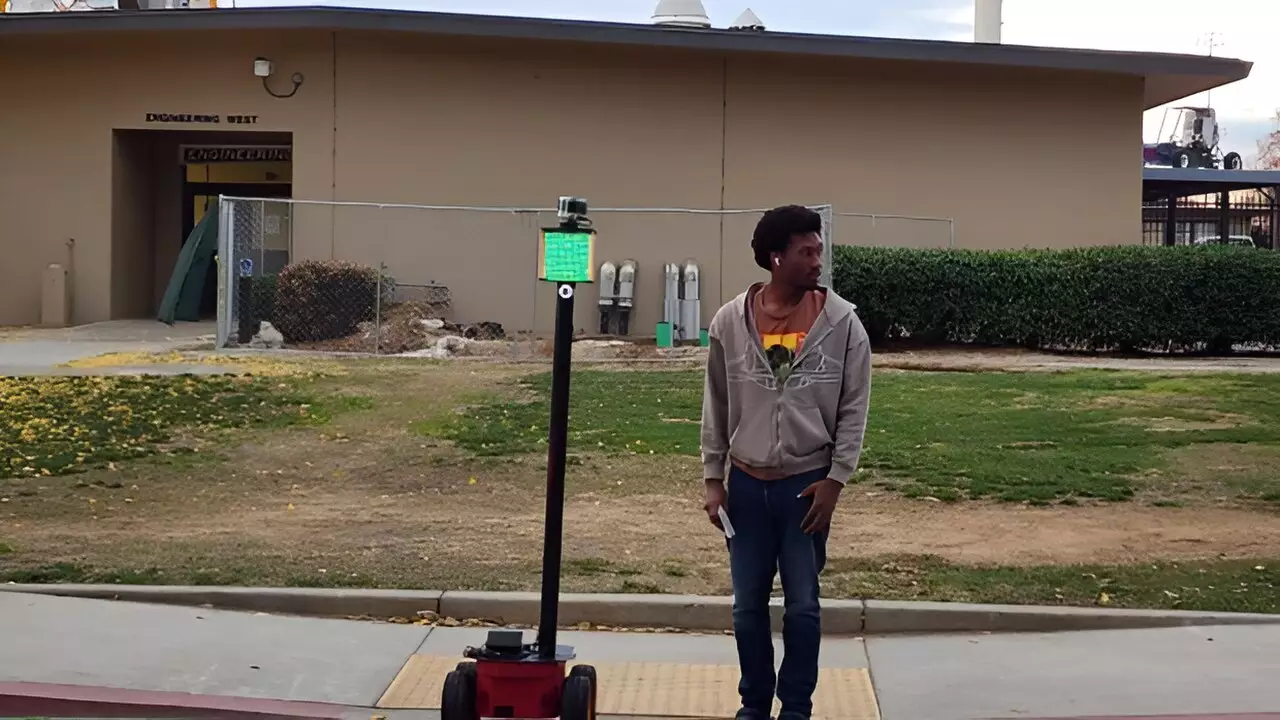Imagine a robot, similar in appearance to a small lawnmower but equipped with advanced sensors and a tablet-sized screen, standing watch at a crosswalk, ready to guide children safely across the street. This is the vision of Hovannes Kulhandjian, an associate professor in electrical and computer engineering at Fresno State, who has developed a prototype called CrossBot. Designed to address the shortage of crossing guards in the Bay Area, CrossBot has the potential to revolutionize the way we ensure the safety of children on their way to school.
With a 360-degree view of its surroundings and a range of sensors including Lidar, a microphone, radar, and video camera capabilities, CrossBot is a sophisticated device aimed at protecting children in crosswalks. The robot is programmed to detect approaching vehicles, cyclists, and pedestrians, and communicates with kids waiting at the curb through its screen, indicating when it’s safe to cross. Additionally, CrossBot can assist visually impaired individuals by signaling when it’s clear to walk. Kulhandjian’s innovative approach stems from his own experience as a parent, recognizing the need for a reliable solution to ensure the safety of children on their daily commute to school.
While some parents see the potential benefits of an automated crossing guard system, others express concerns about the reliability and human touch that traditional crossing guards provide. Despite the increasing turnover of crossing guards in school districts across the Bay Area, there is hesitancy among parents like Kelly Lathrop from Lafayette, who value the personal connection and vigilance that human crossing guards offer. However, parents like Angela Roberts from Santa Clara acknowledge the challenges of hiring and retaining crossing guards, and see the introduction of robotic solutions as a possible remedy to the ongoing shortage.
The shortage of crossing guards is not unique to the Bay Area, as school districts nationwide have reported difficulties in staffing intersections with dedicated personnel. With pedestrian accidents being a significant concern for child safety, the demand for reliable crossing guard services is only expected to increase. According to the U.S. Centers for Disease Control and Prevention, pedestrian-related car crashes are a leading cause of death for children under 14, highlighting the importance of effective safety measures at crosswalks.
Robots have become a ubiquitous presence in various industries, offering solutions to complex problems and enhancing efficiency in different sectors. From autonomous vehicles to delivery drones, robots are reshaping the way we approach tasks and services that require precision and reliability. The global robotics market is projected to reach nearly $96 billion by 2029, reflecting the growing demand for robotic solutions across different domains.
As we navigate the challenges of ensuring the safety of pedestrians, especially children, on our streets, innovative solutions like CrossBot represent a step towards leveraging technology for social good. While concerns about the impact of replacing human crossing guards with robots persist, it is essential to recognize the potential benefits that automated systems can offer in addressing critical shortages and enhancing safety measures. With careful consideration and ongoing evaluation of these technologies, we can strive towards creating a future where the well-being of our communities is safeguarded through a combination of human expertise and technological innovation.


Leave a Reply